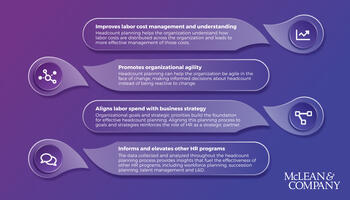- Achieving optimal workload is not as straightforward as equal task distribution. An organization must take multiple factors into account, including external elements, organizational components, job design, team dynamics, and individual differences.
- To identify the right solutions, organizations must first invest the time and resources into measuring workload to uncover challenges and underlying causes.
Need Extra Help?
Speak With An Analyst.
- Get on-demand project support
- Get advice, coaching, and insight at key project milestones
- Go through a Guided Implementation to help you get through your project

Our Advice
Critical Insight
- Workload is not static; it is dynamic by nature and ebbs and flows over time in response to several factors. Achieving optimal workload requires ongoing commitment, action, and accurate measurement to uncover challenges and identify appropriate interventions.
Impact and Result
- Organizations seeking to optimize workload must use a strategic approach to workload measurement, starting with identifying the driving need and scope for workload measurement.
- Next, uncover existing workload challenges by collecting subjective, performance, and/or physiological data.
- Data-driven selection and implementation of targeted interventions support the organization in addressing challenges uncovered through workload measurement.

 Address the Talent Gap Driven by Generative AI
Address the Talent Gap Driven by Generative AI
 Develop an Effective Talent Retention Plan
Develop an Effective Talent Retention Plan
 Design and Build a Strategic Workforce Planning Toolkit
Design and Build a Strategic Workforce Planning Toolkit
 Identify Skills of the Future
Identify Skills of the Future
 Preparing for an Internal Talent Marketplace
Preparing for an Internal Talent Marketplace
 Headcount Planning Guide
Headcount Planning Guide
 HR Guide to Measuring Workload
HR Guide to Measuring Workload